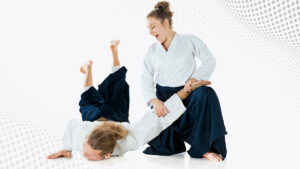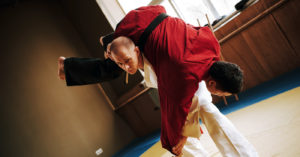In a world where personal safety is of utmost importance, understanding pressure points for self-defense can be a game-changer. This essential knowledge empowers individuals with simple yet effective techniques to incapacitate or deter potential threats without excessive force.
In this blog post, we will explore the fascinating world of pressure point fighting, delving into various types and methods used in martial arts and reality-based self-defense scenarios.
Key Takeaways
- Pressure points are specific areas on the body that, when targeted with sufficient force, can cause extreme pain, reflex responses or unconsciousness in an attacker.
- There are three types of pressure points for self-defense: knockout pressure points, pain-inducing pressure points and restraining pressure points. Each type requires different techniques to be used correctly in varying situations.
- Proper training under expert guidance is essential to ensure safe and effective use of these techniques in real-world scenarios. It’s important to note that not all pressure point techniques are safe or effective against an attacker – only those strictly aimed at immobilization without causing any harm should be employed whenever possible.
Understanding Pressure Points
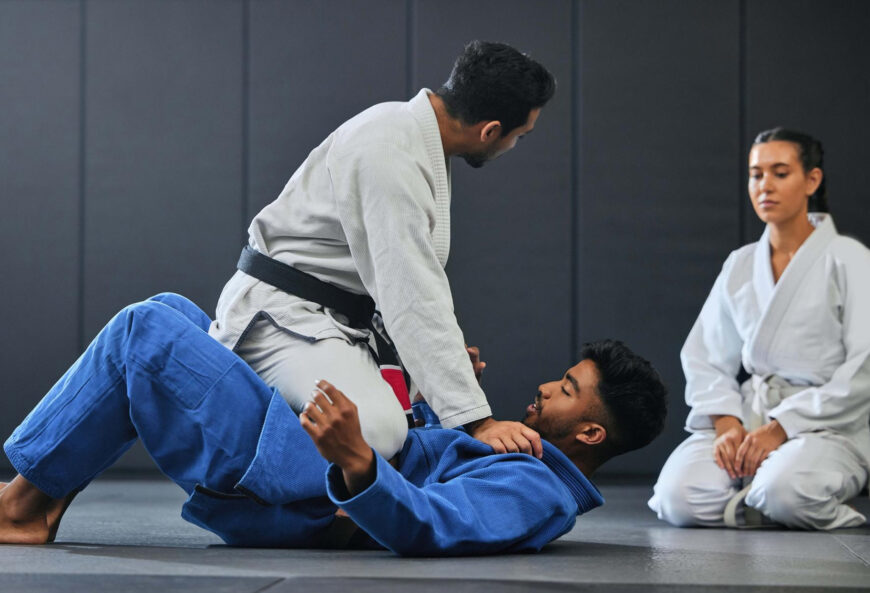
Pressure points are specific areas of the body that, when targeted with a powerful strike, can cause extreme pain, stunning effect, or reflex response.
What Are Pressure Points?
Pressure points are specific locations on the human body where nerves lie close to the surface, often supported by bone or muscle mass. These vulnerable areas can be targeted in self-defense situations, as applying force to these sites may elicit extreme pain, stunning effects, involuntary muscular spasms, disorientation, and even a loss of consciousness.
For example, striking the temple – a well-known pressure point – could potentially incapacitate an attacker by disrupting their balance and causing intense pain.
How Pressure Points Work
Pressure points work by targeting specific vulnerable areas on the human body, where nerves lie close to the surface and are supported by bone or muscle mass.
When these sensitive spots are manipulated during a self-defense situation, they can cause extreme pain, stunning sensations, motor dysfunction, balance disruption, or reflex responses in an attacker.
One example of utilizing pressure points is Krav Maga – a martial art that trains practitioners to recognize and strike these sensitive areas for optimal impact.
In real-world situations involving multiple attackers or unexpected confrontations, it’s crucial for individuals to cause as much discomfort as possible in order to create an opportunity for escape or disarmament.
Different methods of applying force on pressure points – striking with high-velocity impacts (impact pressure point fighting), manipulating blood flow (blood flow knockout pressure points), and causing pain compliance (pain compliance pressure point fighting) – determine their effectiveness in disabling opponents quickly.
For instance, when someone experiences sudden sharp pain after being struck at a specific point like LI-10/shousanli on the arm from a morote-uke (augmented block), it hinders their ability to continue attacking effectively.
Types of Pressure Points For Self-Defense
There are three types of pressure points for self-defense: knockout pressure points, pain-inducing pressure points, and restraining pressure points.
Knockout Pressure Points
Knockout pressure points are crucial targets in self-defense situations that can lead to an immediate loss of consciousness when struck effectively. These targets can be divided into two main categories: impact knockout pressure points and blood flow knockout pressure points. Focusing on these areas enables individuals to defend themselves more efficiently and decisively. Some common knockout pressure points include:
- Head:
- Temple
- Eyes (gouging or fish hook techniques)
- Nose
- Chin
- Ears
- Neck:
- Carotid artery
- Throat
- Back of the neck
- Abdomen:
- Solar plexus
- Groin
- Arms and Legs:
- Knee joint (kicking, striking, or hyperextending)
- Wrist lock techniques (grappling)
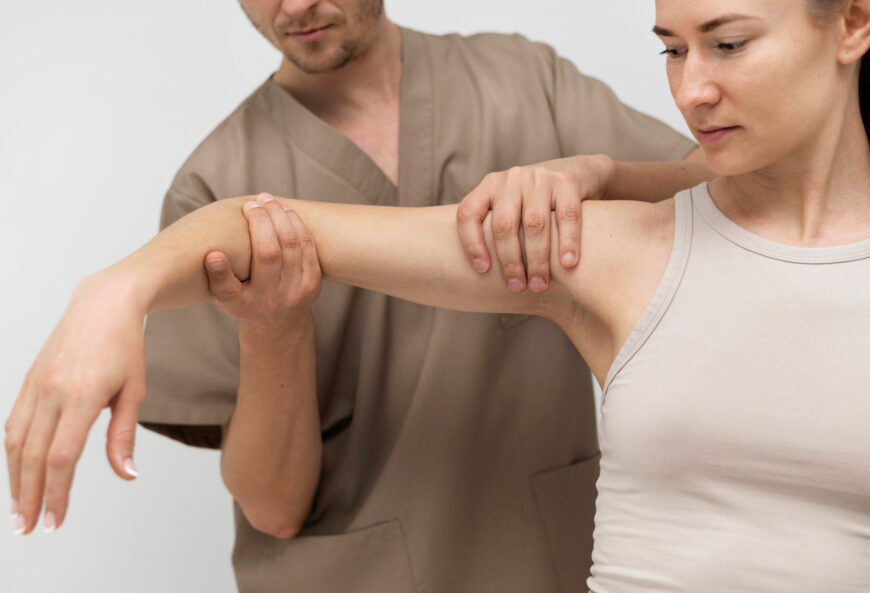
To use these knockout pressure points effectively, it is essential to train and practice regularly, incorporating both striking and grappling methods into one’s self-defense repertoire. Utilizing targeted strikes to sensitive areas should be used only when absolutely necessary, as they could potentially cause permanent injury or even death if not applied responsibly.
Contemporary Fighting Arts offers various training programs and certification opportunities for those interested in mastering the art of pressure point fighting for real-life self-defense scenarios, including specialized courses for police officers and military personnel. As with any self-defense skill, proper instruction is critical to ensure success when employing these powerful techniques under duress during a confrontation.
Pain-Inducing Pressure Points
Pain-inducing pressure points can be used to force an attacker into submission through intense pain. These areas are highly sensitive and can elicit a strong response from the body.
- The temple: Striking the temple with sufficient force can cause disorientation, nausea, and intense pain.
- The nose: A strike to the nose can not only cause extreme pain but also disorientation due to tears in the eyes.
- The chin: Hitting the chin can cause the jaw to jerk upward, potentially leading to a knockout or extreme discomfort.
- The solar plexus: A powerful strike to this area can result in shortness of breath, paralysis of the diaphragm, and intense pain.
- Joints: Applying pressure or bending forcefully on joints like elbows or knees is a highly effective way of inflicting pain and immobilizing an attacker.
- Pressure points in arms and legs: Certain areas along the arms and legs can be targeted to induce cramps or muscular spasms that lead to severe discomfort.
It’s important to note that while these techniques can be effective for self-defense, they should only be used when absolutely necessary as they have the potential for causing significant harm. Training under expert guidance is essential for learning how to target these pressure points effectively without causing permanent damage.
Restraining Pressure Points
Restraining pressure points are techniques that aim to immobilize an attacker without causing pain or injury. These techniques can be useful when dealing with unruly individuals who are not necessarily a physical threat.
- Common restraining pressure points include the wrist, fingers, and elbow.
- Holding pressure on certain points of the arm can render an attacker unable to move it.
- Pressure applied to the fingers or elbow joint can also cause temporary immobilization.
- Proper training is necessary to execute these techniques effectively and safely.
- Restraining pressure point techniques should only be used as a last resort and when physical harm is not imminent.
- They are not intended for use in situations where a quick response is required.
Remember that learning how to use restraining pressure points in self-defense requires careful instruction from a trained professional. Contemporary Fighting Arts‘ instructional DVD on pressure point fighting provides detailed guidance on safe and effective use of these techniques.
Pressure Point Fighting Techniques
Pressure point fighting techniques include striking, compressing, and manipulating specific areas on the body to cause pain or reflex responses. Master these techniques for an effective self-defense strategy.
Striking
Striking is one of the most common methods for pressure point fighting techniques in self-defense. By hitting or punching specific points on the body, you can cause intense pain and even incapacitate your opponent.
For example, striking LI-10/shousanli point on the forearm can cause a sharp and painful sensation that may stop an attacker from grabbing you. Striking S-5/daying point behind the ear can cause dizziness and disorientation, making it easier for you to flee or subdue your opponent.
Compressing
Compressing is another technique used in pressure point fighting. It involves applying sudden and forceful pressure to a specific area of the body, causing motor dysfunction or loss of balance.
For example, pressing on LI-10 (shousanli) located on the forearm can cause intense pain and make it difficult for the adversary to grip anything.
Compressing is an effective way to immobilize an attacker without causing lasting damage. However, it requires precise targeting and timing to be effective in real-life self-defense scenarios.
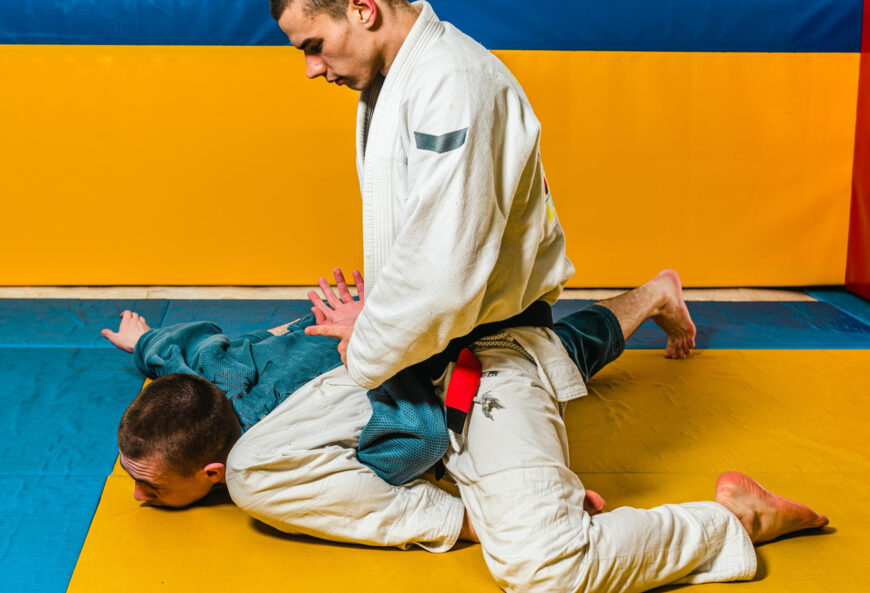
Manipulating
Manipulating pressure points involves using joint locks or twists to restrict an attacker’s movements. This technique can be particularly useful when trying to restrain an assailant without causing them harm.
By manipulating pressure points, you can take control of a situation and prevent further harm from occurring. For example, if someone is grabbing your wrist, you can twist their arm behind their back by pushing on their elbow joint and applying steady pressure.
It is worth noting that manipulating pressure points should only be used in situations where necessary force has been authorized and it is absolutely crucial for self-defense purposes.
In many cases, simply striking or compressing a vulnerable area may provide more effective results with less risk involved.
Popular Pressure Points For Self-Defense
Some of the most popular pressure point targets for self-defense include the eyes, ears, temple, nose and back of the neck – read on to learn more about how to use them effectively in a real-life scenario.
Head And Neck Pressure Points
One of the most effective areas to target in pressure point fighting for self-defense is the head and neck. Here are some specific pressure points to aim for:
- Temple: Striking the temple with enough force can cause a knockout.
- Eyes: Gouging an attacker’s eyes can disorient them and allow for escape.
- Ears: A strong slap or strike to the ear can cause pain and even ruptured eardrums.
- Nose: A well-placed strike to the nose can cause pain, bleeding, and disorientation.
- Chin: Hitting the chin with an uppercut or cross can cause severe pain and possible knockouts.
- Back of Neck: Applying pressure or a strike to the back of the neck can disrupt balance and motor function, causing disorientation or fainting.
- Throat: A strong hit or compression of the throat area can restrict breathing and leave an attacker incapacitated.
It is important to note that using pressure points in self-defense should only be done as a last resort when physical harm is imminent, as incorrect targeting or excessive force could lead to serious injury or legal consequences. Proper training and safety precautions should always be taken into consideration when practicing pressure point techniques.
Arm And Hand Pressure Points
Arm and hand pressure points are essential targets for self-defense techniques. A powerful and deliberate strike to a pressure point target on the arm or hand can cause extreme pain, stunning effect, motor dysfunction, balance disruption, or reflex response. Here are some of the most effective pressure points to target in the arms and hands:
- LI-10/Shousanli: Located at the top of the forearm near the elbow crease, striking this point can cause pain and weakness in the opponent’s arm.
- LU-5/Chize: Located on the inside of the elbow crease when the arm is bent, applying pressure to this point can cause extreme pain and make it difficult for an opponent to grip.
- PC-6/Neiguan: Located on the wrist between two tendons, pressing this point causes nausea and dizziness.
- TW-10/Tianjing: Located on either side of the forearm about 1 inch below the elbow joint, striking this point can result in temporary paralysis.
- HT-7/Shenmen: Located on the inside of the wrist just above where it bends, striking this point can cause confusion or disorientation.
- TE-5/Waiguan: Located on the outside part of your forearm near your wrist bone, manipulating or compressing TE-5 will affect a person’s fingers’ movements.
When training with these pressure points in mind as targets, it is essential to practice under safe conditions with an experienced instructor who can guide you through proper techniques. By mastering these techniques into muscle memory over time with regular practice and persistence, one could use them instinctively during real-life situations that require self-defense skills.
Leg And Foot Pressure Points
Leg and foot pressure points can be very effective in self-defense situations as they are often vulnerable, sensitive areas that can cause extreme pain when struck. Here are some of the most popular leg and foot pressure points:
- Knee: Striking the knee joint with a forceful kick or punch can cause immense pain and even dislocate or fracture the joint.
- Shin: The shin bone is highly sensitive to impact and can cause debilitating pain when struck forcefully.
- Foot arch: Applying pressure or striking the arch of the foot can cause significant pain and even immobilize an attacker.
- Achilles tendon: A strike or compression on the Achilles tendon can cause severe pain and even rupture the tendon, rendering an attacker unable to stand or walk.
- Ankle joint: Attacking the ankle joint with a forceful blow can result in sprains, fractures, or even dislocation.
By understanding these leg and foot pressure points, individuals trained in self-defense techniques such as Krav Maga or martial arts can effectively defend themselves against attackers during real-life scenarios. However, it’s important to note that using excessive force on pressure points can cause serious injury or even death, so safety considerations should always be taken into account when practicing these techniques.
Torso Pressure Points
The torso is a crucial area for self-defense, with many pressure points that can be targeted to achieve various effects. Here are some of the most effective ways to target torso pressure points:
- Strike the Solar Plexus: The solar plexus is a vulnerable area located in the center of the torso, just below the ribcage. A powerful strike to this area can cause extreme pain, potentially leading to disorientation or even unconsciousness.
- Target Pressure Points on the Spine: There are several pressure points along the spine that can be targeted for pain or other effects. These include the cervical vertebrae (at the base of the neck), lumbar vertebrae (in the lower back), and sacrum (located at the base of the spine). Strikes or other forms of pressure on these points can cause pain, paralysis or even death.
- Attack Vital Organs: The organs within your torso are some of your body’s most vulnerable areas. A well-placed strike to your heart, lungs or liver can have severe consequences and potentially end an attack swiftly.
- Use Sensitive Areas: Alongside vital organs, there are also more sensitive areas on your torso that require protection such as your spleen, pancreas and kidneys.
Remember when targeting sensitive areas it’s important to be cautious – striking too hard may lead to permanent damage or death. Always train under professional guidance when attempting a comprehensive approach towards martial arts and self-defense especially when using lethal techniques like pressure point fighting on vulnerable parts like arteries/veins around vital organs which could result in heavy harm or death if executed improperly.
The Effectiveness of Pressure Points In Real-Life Self-Defense
Pressure points can be effective in real-life self-defense situations, particularly knockout pressure points that cause an immediate loss of consciousness, but there are also limitations and safety considerations to keep in mind.
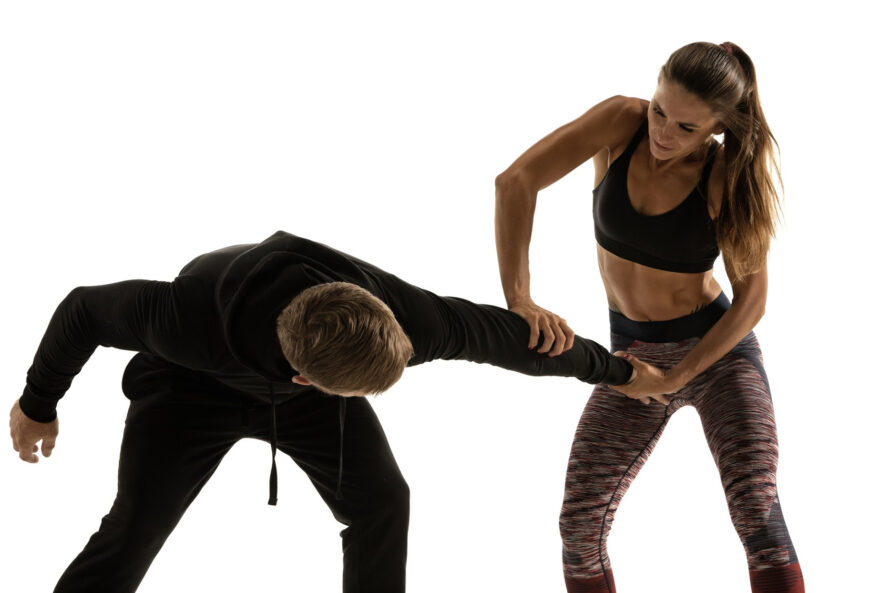
Pros of Using Pressure Points
Using pressure points for self-defense can have several advantages, including:
- Enables a smaller and weaker person to defend themselves against a larger attacker.
- Can quickly subdue an attacker without causing serious injury.
- Allows for precise targeting of vulnerable areas on the body, reducing the risk of missing or ineffective strikes.
- Does not require excessive force or strength, reducing the risk of injury to oneself.
- Increases the likelihood of escaping dangerous situations unharmed.
- Can be used in various real – life scenarios, including unarmed encounters and weapon defense situations.
- Enhances overall martial arts skills by incorporating a comprehensive approach to self – defense that includes strikes and grappling techniques.
- Has been scientifically proven to be effective in disrupting motor function, balance, and causing disorientation and loss of consciousness when applied correctly.
Overall, using pressure points in self-defense can provide an effective means of protection while minimizing harm to both parties involved in a physical altercation.
Cons And Limitations
While pressure point techniques can be a great addition to any self-defense arsenal, it is important to note that they are not foolproof and come with some limitations. Here are some cons and limitations to consider when using pressure points in self-defense:
- Not always effective: Pressure point strikes may not always work as expected, especially if the attacker is under the influence of drugs or alcohol, or has a high pain tolerance.
- Requires precision: To effectively use pressure points, you must have precise knowledge of their location and how to strike them. Without proper training, attempting to use these techniques could cause more harm than good.
- Legal and moral concerns: Certain pressure point strikes, such as those targeting the eyes or throat, may be considered illegal or unethical in some situations.
- Risk of injury: If not executed properly, pressure point strikes can cause permanent damage or even death to the opponent.
- Limited range: Pressure point strikes require close proximity to the attacker, making it difficult to execute if the attacker is armed or attacking from a distance.
It’s important to keep these limitations in mind when considering whether to use pressure point techniques in a self-defense situation. Proper training and caution are key for the safe and effective use of these methods.
Safety Considerations When Practicing Pressure Point Techniques
Practicing pressure point techniques for self-defense is not without risks, and safety should always be a top priority. It’s essential to understand that these techniques can cause significant pain, hinder reflexes or even result in unconsciousness if used improperly or on the wrong body parts.
One of the most crucial safety considerations when practicing pressure point techniques is knowing your target areas precisely. Understanding the human anatomy and identifying sensitive areas helps avoid serious damage when applying pressure points effectively.
Another important safety consideration is seeking reliable instruction from a qualified practitioner who has experience in applying pressure points correctly.
Lastly, taking personal precautions during practice sessions will ensure you don’t hurt yourself or others accidentally.
In conclusion, learning how to use pressure points safely requires diligent work devoted time and effort towards understanding correct form while receiving proper instruction from certified practitioners practicing patience throughout this process will make sure safe but successful execution of practical moves suitable for various real-life scenarios such as street fighting situations directing all efforts at achieving total mastery over different aspects related specifically to martial arts principles can ultimately improve chances of survival under dangerous circumstances where attackers may remain unpredictable regardless of methods used in advance preparation – including those involving pressure point combat tactics!
Read also:
- Should You Train Jiu-Jitsu For Sport Or Self-Defense?
- Woman Who Is Just 4’11 Uses MMA To Thwart Would-Be Cell Phone Thief
- 13 Best Martial Arts For Self-Defense (Ranked According to Experts)
- Can Cardio Kickboxing be Good for Self Defense?
- MMA vs. Boxing: What to Train? Which Style is More Effective?
FAQs
1. What are pressure points in self-defense?
Pressure points are specific areas on the body that can be targeted for self-defense purposes to cause pain, discomfort or even incapacitation in an attacker. These points vary depending on the individual and situation.
2. How do pressure points work in self-defense?
By applying pressure or striking certain areas of the body, it is possible to disrupt an attacker’s balance and cause them pain or temporary paralysis. This allows for opportunities to escape or neutralize the threat.
3. Are there risks associated with using pressure points for self-defense?
Yes, using pressure points can be dangerous if not done properly as it could result in serious injury or harm to yourself or others involved. It is important to receive proper training before attempting any techniques involving pressure point application.
4. Can anyone learn how to use pressure points for self-defense?
While anyone can potentially learn how to apply pressure point techniques, it requires dedicated practice and training under a qualified instructor in order to use these methods effectively and safely in real-world situations.
Conclusion
In conclusion, pressure points can be a valuable tool for self-defense when used correctly. Understanding the different types of pressure points and techniques for striking, compressing or manipulating them is crucial in any real-life scenario.
However, it’s important to note that not all pressure point techniques are safe or effective against an attacker. Knockout pressure points that produce immediate loss of consciousness and immobilization are the safest and most reliable form of defense.
Always practice safety precautions when training with pressure point techniques.





